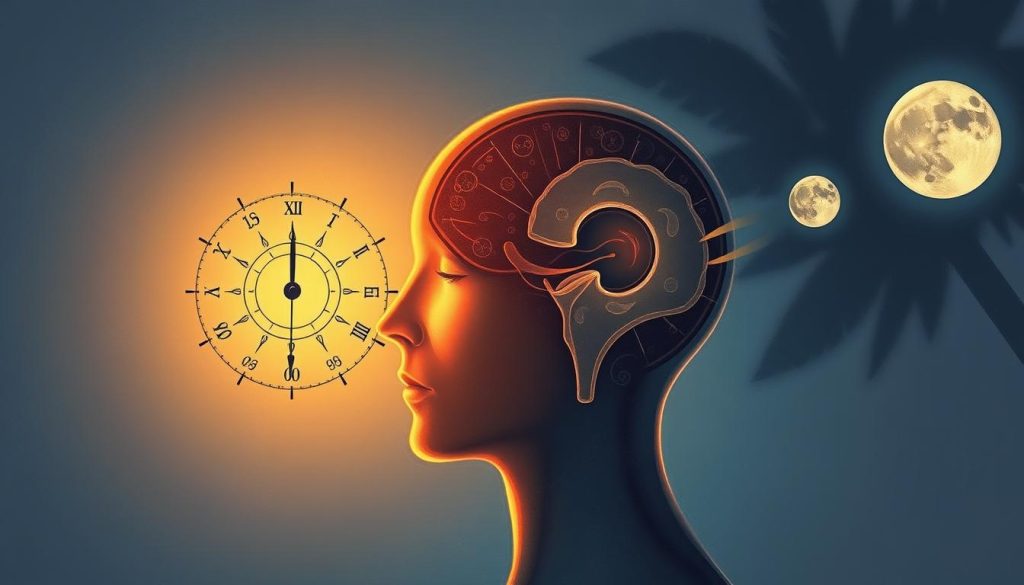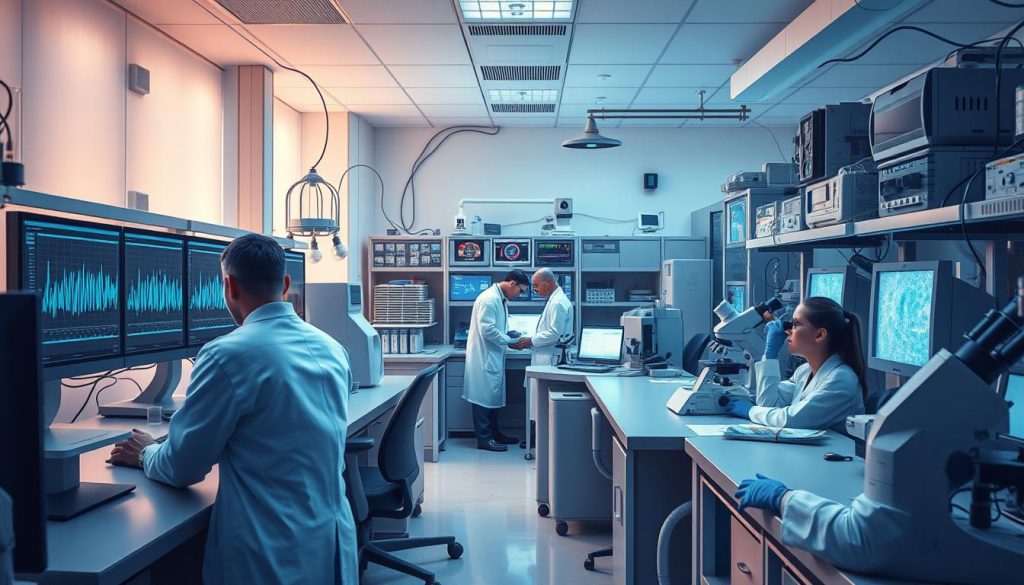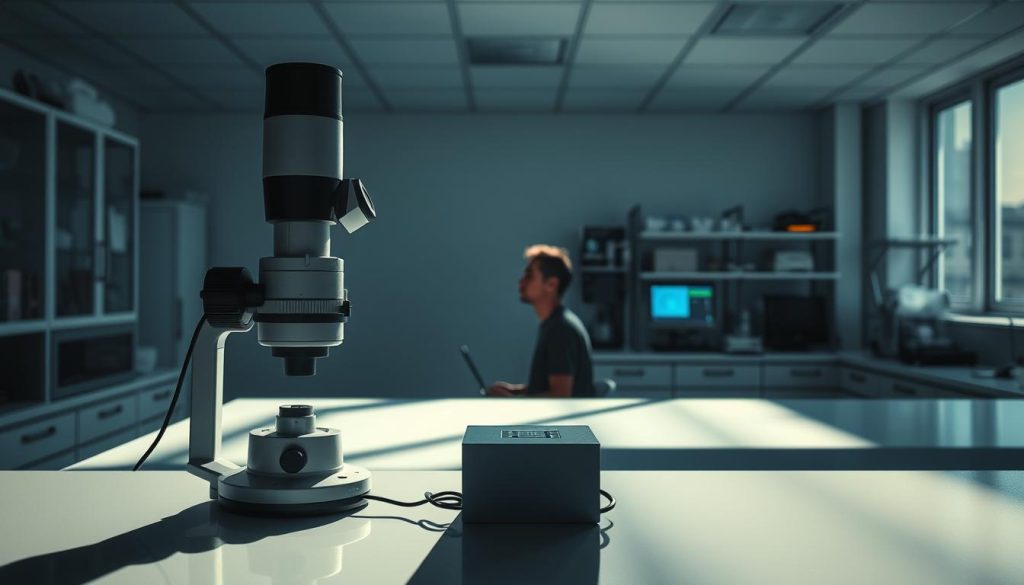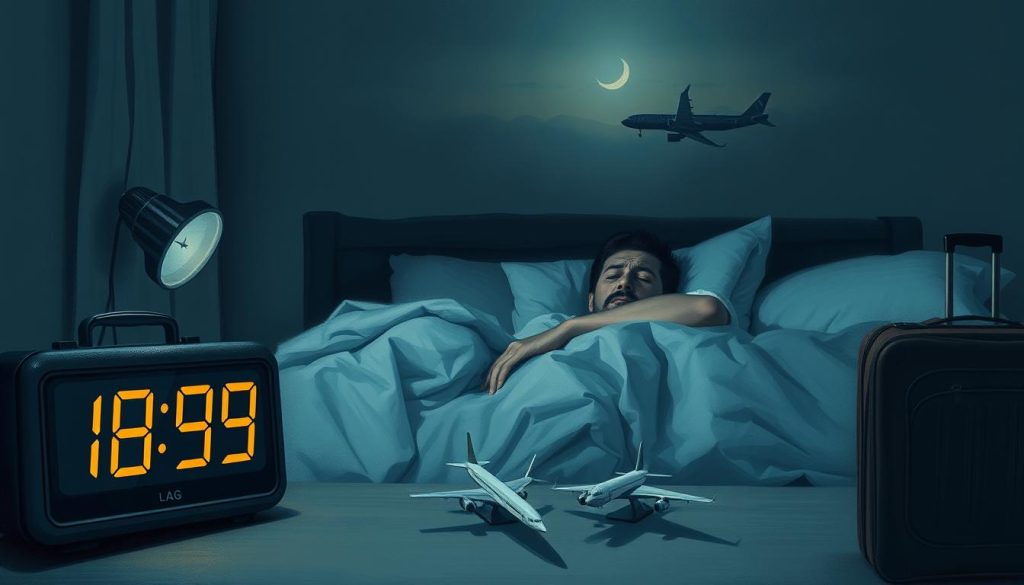Your body has an internal clock that’s more accurate than any watch. Scientists are uncovering how this biological timing system works. These findings are changing our views on health, sleep, and daily life.
Recent studies in chronobiology show our internal clocks control more than sleep. They affect hormone production and immune function. Doctors now use this knowledge to time treatments for better outcomes.
These scientific breakthroughs offer real solutions to everyday issues. Shift workers can adjust their body clocks better. Doctors schedule surgeries at the best times for faster healing. Even schools are thinking about changing start times for teenagers.
The field of biological timing keeps surprising researchers with new insights. Each discovery brings us closer to personalized medicine based on our body clocks. This emerging science promises to change how we approach wellness and medical care.
Understanding Circadian Rhythms: A Brief Overview
The human body has a remarkable system that controls our daily rhythms. It affects when we feel hungry and how our immune system works. People often notice these patterns when they travel or work shifts.
Our biological clocks do more than just control sleep. They also manage hormone levels, body temperature, and gene expression. This ensures our body functions at the best times, creating a harmonious process.
What Are Circadian Rhythms?
Circadian rhythms are 24-hour cycles found in all living things. The term “circadian” comes from Latin, meaning “about a day.” These rhythms help our bodies prepare for daily changes.
Think of your circadian rhythm as a conductor for your body’s orchestra. It makes sure different systems work together. For example, your body temperature drops at night to sleep, and cortisol levels rise in the morning to wake up.

These rhythms exist even without external cues. Scientists have tested this by keeping people in environments without clocks or windows. Amazingly, these people still follow a 24-hour sleep-wake cycle, showing it’s an internal process.
The Science Behind the Sleep-Wake Cycle
The sleep-wake cycle’s master control center is in the brain, called the suprachiasmatic nucleus (SCN). This area receives light signals from the eyes and sends timing signals to the body.
When light hits the retina, it sends signals to the SCN. This helps our internal clocks match the outside world. The SCN then works with other parts of the brain and body, controlling hormone releases that affect our sleep.
Environmental cues, or “zeitgebers,” help fine-tune these rhythms. Light is the strongest cue, but other factors like meal times and social interactions also matter. Keeping a consistent routine can greatly improve sleep and overall health.
Recent Breakthroughs in Circadian Rhythm Research
The field of circadian rhythm research is seeing big breakthroughs. These changes could change healthcare a lot. Scientists are finding new ways our internal clocks affect health.
They can now map our internal clocks with great detail. This means treatments can be made just for each person. It’s not just about sleep anymore. It’s about how it affects cancer treatment, diabetes, and surgery recovery.
New Genetic Findings
Genetic research has found why some people are morning people and others are night owls. Scientists found that certain genes like CLOCK and PER2 affect our rhythms. This helps doctors know when to give certain medicines.
One study found that some people react differently to melatonin. This is leading to treatments that fit each person’s needs. Doctors can now predict who will get the most benefit from certain treatments.

Genetic research also shows links between certain genes and diseases. Some people might be more at risk for certain health problems. This helps doctors create plans to prevent these problems.
Impacts on Mental Health
Research shows a strong link between disrupted rhythms and mental health issues. People with irregular sleep patterns are more likely to have mood disorders. This is changing how mental health is treated.
Chronotherapy is becoming a key treatment for depression and seasonal affective disorder. It involves timing light and sleep to reset rhythms. It’s often more effective and has fewer side effects than traditional treatments.
Stable rhythms can also prevent mood swings in bipolar disorder. Patients who stick to a routine and use light therapy see big improvements. This is changing how bipolar disorder is treated worldwide.
Anxiety research also shows a link to disrupted rhythms. Correcting these patterns through chronotherapy can reduce anxiety. This improves quality of life for those with anxiety.
Innovations in Sleep Disorders Treatments
Sleep medicine is being transformed by new circadian biology insights. Doctors can now give light therapy that works better than before. This helps people with sleep disorders caused by work schedules or other issues.
Advanced melatonin treatments are also getting better. Doctors now give specific doses at the right times for each person. This is showing great success in treating sleep disorders.
New devices track and optimize rhythms in real-time. These devices monitor light, activity, and sleep patterns. This helps doctors fine-tune treatments for better results.
Light therapy devices are getting easier to use. Patients can get the right light doses at home with special glasses or light boxes. These devices adjust to the time of day and individual needs.
Genetic testing, personalized chronotherapy, and monitoring are changing sleep medicine. Patients are recovering faster and seeing better results than ever before.
The Role of Light in Regulating Circadian Rhythms
When sunlight hits our eyes in the morning, it starts a chain of events. This chain helps our body’s internal clock get in sync. Light is like the conductor of our circadian system, sending signals to the brain’s timekeeper.
This tiny part of our brain controls everything from hormone release to body temperature. It’s like a master clock that runs our body.
The timing and quality of light we get can greatly affect our sleep. Research shows that our body responds differently to light at different times of the day. Knowing this helps us create a better light environment for health.

Blue Light and Its Effects
Blue light has become a big topic in health talks. It’s a short-wavelength light that helps keep our clocks in sync. In the morning, it helps us stay awake by stopping melatonin production.
But, the timing of blue light is key. Getting it in the morning and early afternoon can improve mood and focus. Studies show it can even help with depression and sleep disorders.
But, blue light in the evening is a different story. Devices like phones and tablets give off a lot of blue light. This can make it hard to fall asleep and reduce sleep quality.
To manage blue light, we can use warm-toned lights at night and turn on blue light filters on devices. Some people use blue light blocking glasses, but it’s not for everyone. The goal is to find a balance, not avoid blue light completely.
The Importance of Natural Light Exposure
Natural sunlight is the best for our body’s clock. It offers benefits that artificial light can’t match. Sunlight changes throughout the day, giving our body natural cues.
Morning sunlight is especially important. Just 15-20 minutes outside can improve sleep and mood. It helps our body know when it’s day and when it’s night.
But, natural light changes with the seasons. Less light in winter can affect mood and sleep. Light therapy boxes can help during these times.
For those who spend a lot of time indoors, getting natural light is crucial. Simple changes like working near windows or eating outside can make a big difference. These small steps can improve sleep and alertness.
Exploring Circadian Rhythm Disruptions
Our fast-paced world disrupts our internal clocks. Millions face daily challenges that upset their natural sleep-wake cycles. Two major culprits harm our circadian health.
These disruptions affect many. One in five workers has non-traditional schedules. Frequent travelers also face time zone challenges.

Effects of Shift Work on Health
Shift work disorders affect about 20% of Americans. Workers face serious health risks. Their bodies struggle with schedules that conflict with daylight.
Health consequences are alarming. Shift workers have higher rates of heart disease, diabetes, and cancers. Their immune systems weaken, making them more susceptible to infections.
Sleep quality drops for shift workers. Many find it hard to fall asleep during daylight. Poor sleep leads to decreased job performance and increased accident risk.
Smart strategies can help. Strategic light exposure during work hours resets the internal clock. Optimized break scheduling supports alertness.
Some companies use specialized lighting systems. These systems mimic natural daylight to help workers stay aligned with their circadian rhythms.
Jet Lag: More Than Just Tiredness
Jet lag affects millions of travelers each year. Its impact goes beyond simple tiredness. It disrupts body systems like the brain, digestive system, and immune function.
Cognitive performance drops during jet lag. Travelers face memory problems, difficulty concentrating, and slower reaction times. These effects last several days after arrival.
Travel direction matters. Eastward flights cause more severe jet lag than westward journeys. It’s harder for our bodies to extend the day than to shorten it.
Individual differences affect jet lag severity. Morning people struggle more with eastward travel. Night owls handle westward flights better.
Gut health also suffers during jet lag. The digestive system’s circadian rhythms get disrupted. This can cause stomach problems, changes in appetite, and digestive discomfort.
Evidence-based recovery strategies can help. Gradual schedule adjustments before travel prepare your body. Strategic meal timing and light exposure at your destination promote faster recovery.
Future Directions in Circadian Rhythm Research
The field of circadian rhythm research is at a thrilling point. Scientists are working on new ways to understand and treat sleep issues. These breakthroughs could make circadian science more useful for everyone.
Potential for Personalized Medicine
Doctors are looking into how genetics can guide treatment times. At Memorial Sloan Kettering, cancer patients get chemotherapy based on their body temperature rhythms. This approach reduces side effects and boosts treatment success.
Researchers are also studying how chronotype testing can improve medication schedules for depression and other conditions. This could lead to better treatment plans for each person.
Advancements in Wearable Technology
Apple Watch and Fitbit devices now track sleep patterns very accurately. New monitors can measure body temperature rhythms all night. These tools help people understand their circadian patterns and make better lifestyle choices.
Collecting real-time data is making circadian health monitoring easier than ever. This technology is a big step forward.
Addressing Global Health Challenges
Circadian research is tackling big health problems. Scientists are creating light therapy for seasonal affective disorder. Urban planners are designing cities with circadian-friendly lighting.
New treatments are helping older people with sleep changes. These efforts aim to make communities healthier by aligning with natural rhythms.
The future of circadian rhythm research holds great promise for better health. These scientific advances will shape our approach to sleep, health, and wellness for years to come.

